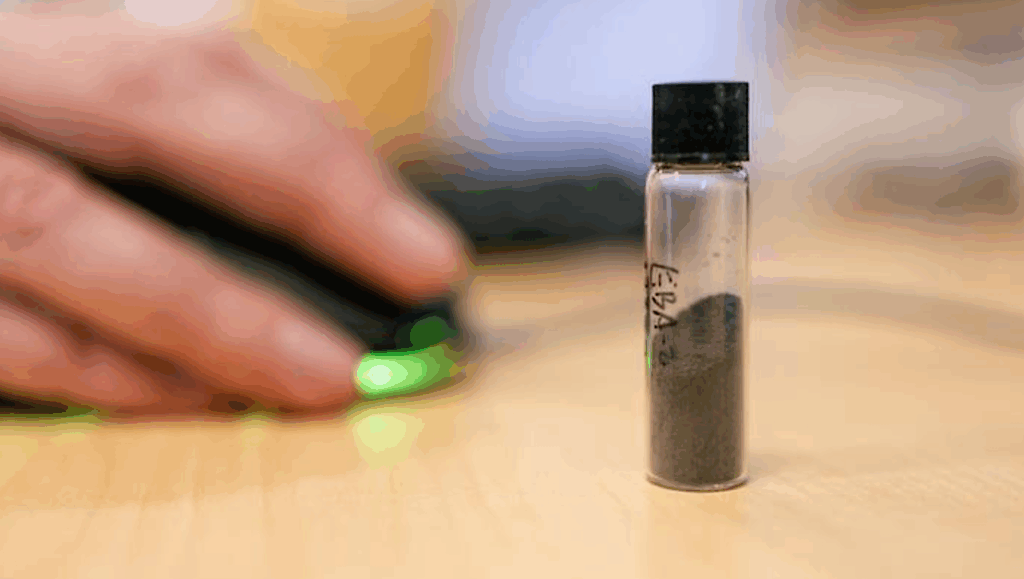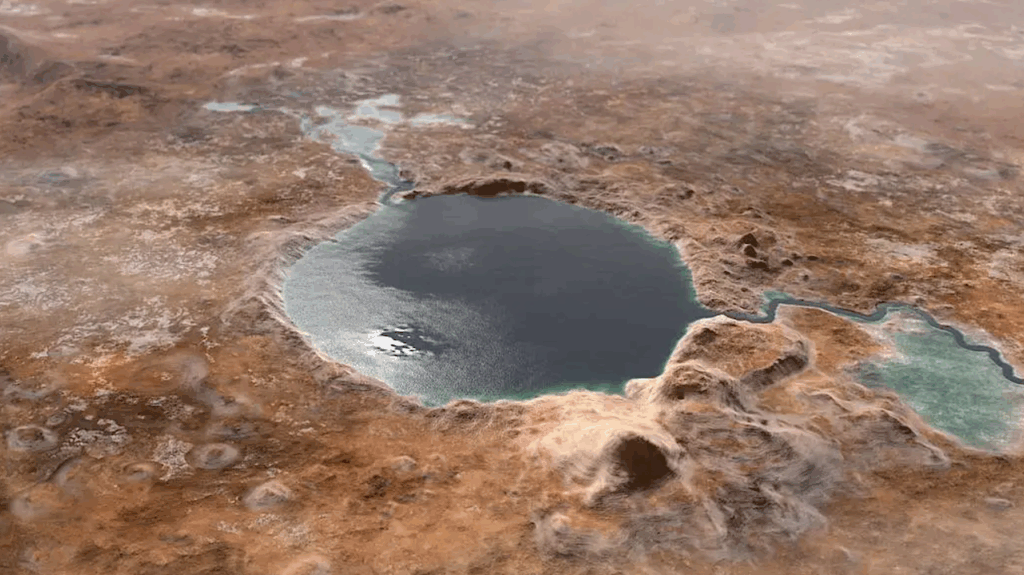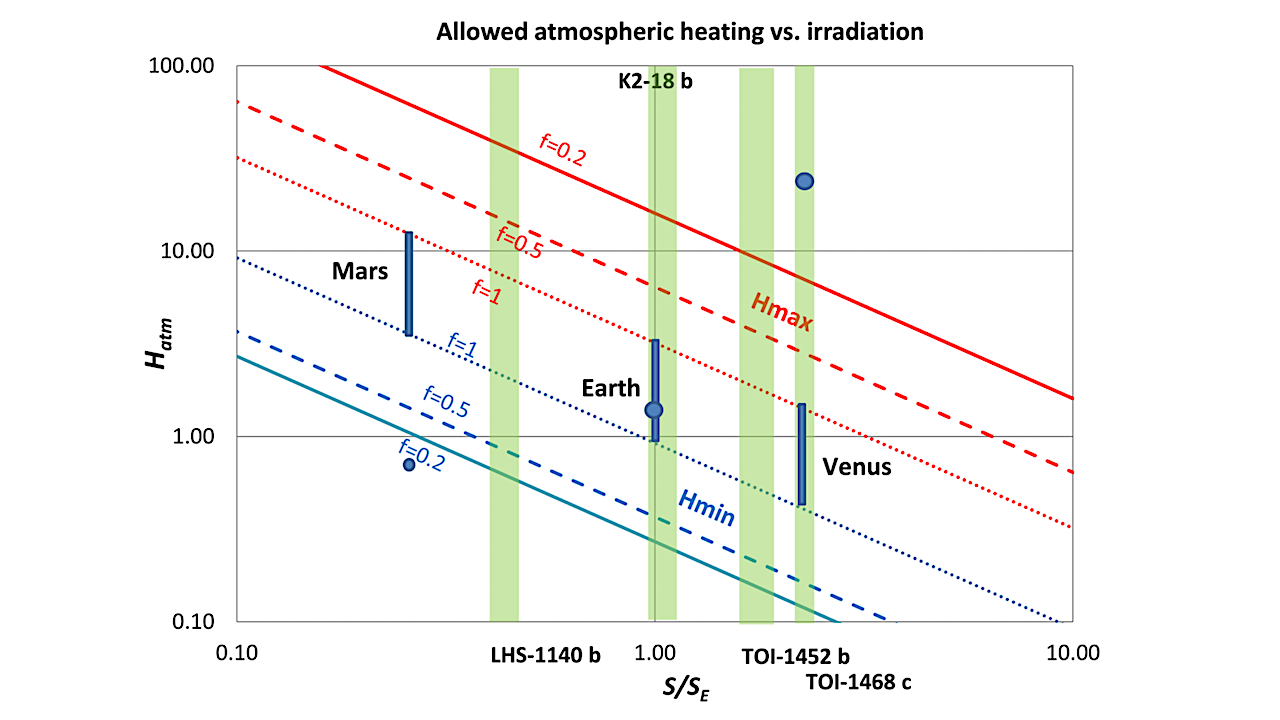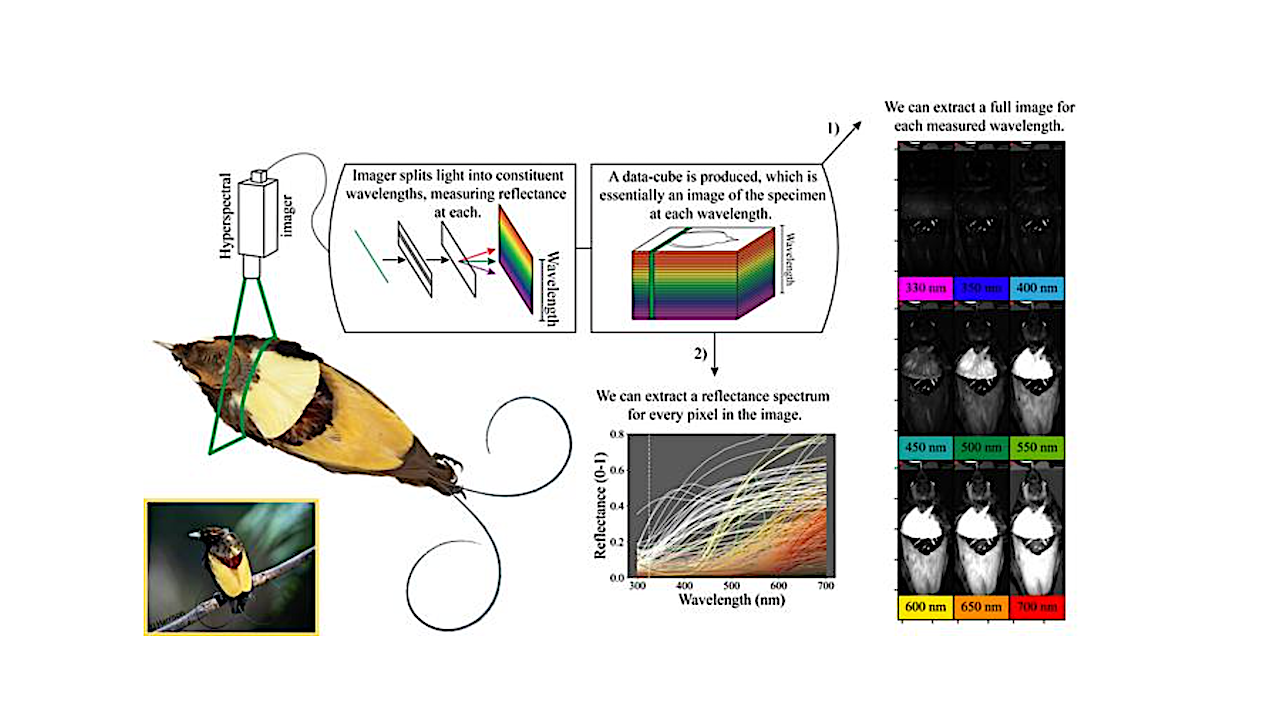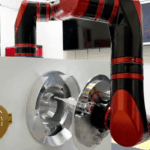Now Reading: A Nearly Terrestrial D/H For Comet 67P/Churyumov-Gerasimenko
-
01
A Nearly Terrestrial D/H For Comet 67P/Churyumov-Gerasimenko
A Nearly Terrestrial D/H For Comet 67P/Churyumov-Gerasimenko
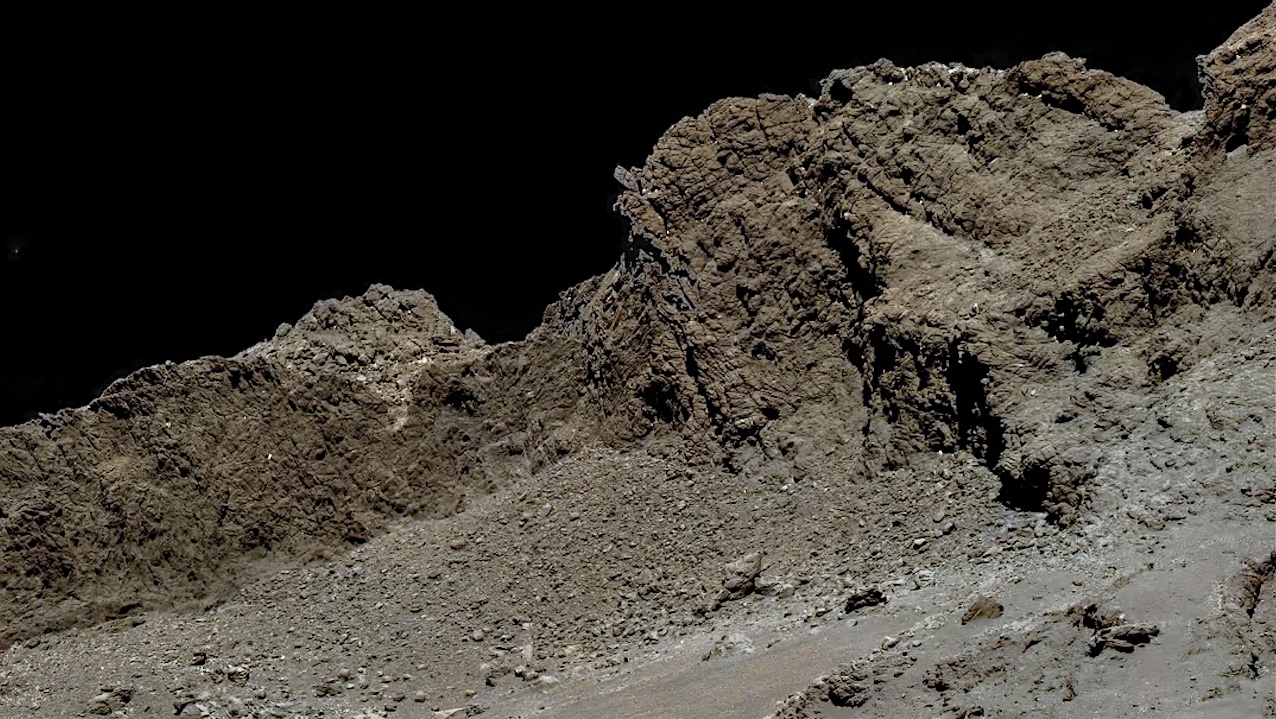

Comet 67P/Churyumov-Gerasimenko — ESA
Cometary comae are a mixture of gas and ice-covered dust. Processing on the surface and in the coma change the composition of ice on dust grains relative to that of the nucleus.
As the ice on dust grains sublimates, the local coma composition changes. Rosetta observations of 67P/Churyumov-Gerasimenko previously reported one of the highest D/H values for a comet.
However, reanalysis of more than 4000 water isotope measurements over the full mission shows that dust markedly increases local D/H. The isotope ratio measured at a distance from the nucleus where the gas is well mixed is close to terrestrial, like that of other Jupiter family comets.
This lower D/H has implications for understanding comet formation and the role of comets in delivering water to Earth.

Creating enriched layers of water on dust grains begins with (A) water ice from the nucleus sublimating to expose dust surfaces. (B) HDO, hypervolatiles, and potentially H217O, preferentially adsorbs to the exposed surfaces creating a highly enriched near surface layer. (C) Additional slightly enriched water ice layers accumulate. (D) The dust cycle for 67P (30) begins during perihelion, or phase 1, when increasing activity releases new dust grains into the coma. These grains release hypervolatiles and the top layers of enriched water (31). (E) During both phases 1 and 2, about 20% of the dm-size dust grains are redeposited onto the surface in colder regions of the nucleus (30, 31) to be (F) reactivated during the next pre-perihelion, or phase 3. At this time, the ice on the dust grains is depleted in hypervolatiles and the most enriched layers of water ice are released. — Science Reports via PubMed

All measurements are compared to terrestrial VSMOW values (dashed lines). Several species have been reported for the Rosetta target comet 67P/Churyumov-Gerasimenko (67P/C-G; open black diamonds with blue error bars) and are compared to results from this work (open black squares with blue error bars). (A) Several D/H measurements are available including chondrites (gray), Saturn’s moons (cyan and orange), two TNOs (steel blue), and several Oort Cloud (blue filled) and Jupiter Family (blue with black outline) comets. (B) 16O/17O is available for the Sun, Mars, and chondrites (gray); Titan (orange); and comet 67P/C-G. (C) 16O/18O is also available for Jupiter, Venus, several Oort Cloud comets (OCCs; blue filled), and one additional Jupiter Family (blue with black outline) comet (see the Supplementary Materials and tables S1 to S3). — Science Reports via PubMed
A nearly terrestrial D/H for comet 67P/Churyumov-Gerasimenko, Science Reports via PubMed (open access)
Astrobiology, Astrochemistry,
Stay Informed With the Latest & Most Important News
-
 012024 in Review: Highlights from NASA in Silicon Valley
012024 in Review: Highlights from NASA in Silicon Valley -
 02Panasonic Leica Summilux DG 15mm f/1.7 ASPH review
02Panasonic Leica Summilux DG 15mm f/1.7 ASPH review -
 03How New NASA, India Earth Satellite NISAR Will See Earth
03How New NASA, India Earth Satellite NISAR Will See Earth -
 04From Polymerization-Enabled Folding and Assembly to Chemical Evolution: Key Processes for Emergence of Functional Polymers in the Origin of Life
04From Polymerization-Enabled Folding and Assembly to Chemical Evolution: Key Processes for Emergence of Functional Polymers in the Origin of Life -
 05And Thus Begins A New Year For Life On Earth
05And Thus Begins A New Year For Life On Earth -
 06Astronomy Activation Ambassadors: A New Era
06Astronomy Activation Ambassadors: A New Era -
07SpaceX launch surge helps set new global launch record in 2024













